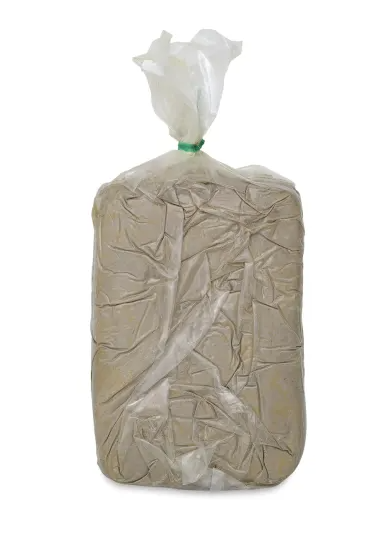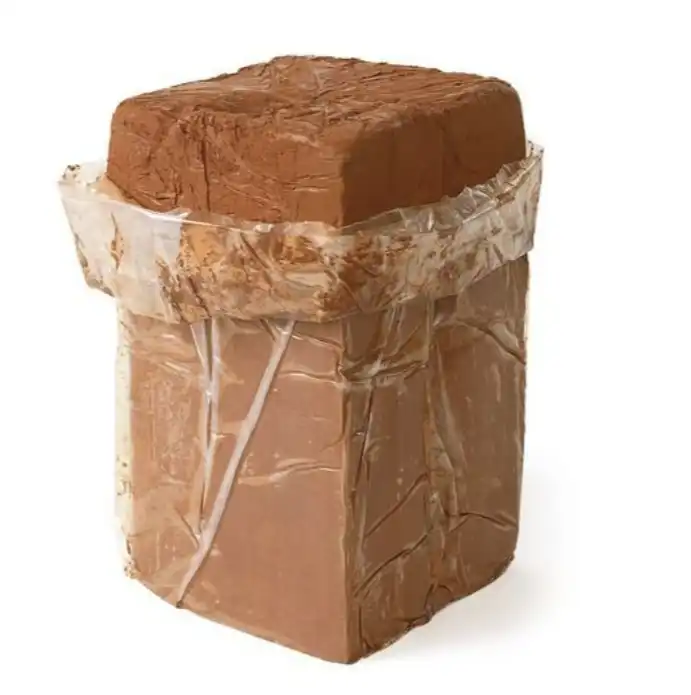Clay is a versatile material used in many crafts and projects. It offers endless creative possibilities.
A bag of clay can be a gateway to your next artistic adventure. Whether you’re a seasoned sculptor or a curious beginner, clay provides a tactile and rewarding experience. With a simple bag of clay, you can mold, shape, and create beautiful pieces.
From pottery to small sculptures, clay opens up a world of creativity. This blog will explore the different ways you can use a bag of clay, offering tips and ideas to inspire your next project. Get ready to get your hands dirty and unleash your inner artist. Let’s dive into the wonderful world of clay!

Credit: www.riverartsvt.org
Contents
- 1 Introduction To Pottery
- 2 Choosing The Right Clay
- 3 Essential Pottery Tools
- 4 Preparing Your Workspace
- 5 Basic Pottery Techniques
- 6 Advanced Pottery Techniques
- 7 Firing And Glazing
- 8 Troubleshooting Common Issues
- 9 Inspiration And Creativity
- 10 Showcasing And Selling Your Work
- 11 Frequently Asked Questions
- 12 Conclusion
Introduction To Pottery
Pottery is an ancient craft. It involves shaping clay into objects. These objects can be both functional and decorative. Pottery combines art and utility. It’s a skill that has been passed down through generations. Let’s delve into its rich history and modern trends.
History And Significance
Pottery dates back to ancient times. Early humans used clay to make pots, bowls, and jars. These items were crucial for storing food and water. The oldest pottery pieces are over 20,000 years old. They were found in China and Japan.
Throughout history, different cultures developed unique styles. For example, Greek pottery is known for its detailed paintings. Egyptian pottery often featured bright colors and intricate designs. Each culture’s pottery tells a story about its people and their lives.
Pottery also played a significant role in trade. Ancient civilizations traded pottery for goods and services. Pottery pieces were often used as currency. This made pottery essential for economic growth.
Modern Pottery Trends
Today, pottery continues to be popular. Modern potters experiment with new techniques and materials. They create unique pieces that blend traditional and contemporary styles.
Here are some current trends in modern pottery:
- Minimalist Design: Simple shapes and neutral colors are in demand.
- Eco-Friendly Materials: Many potters use sustainable and recycled materials.
- Handmade Aesthetic: People appreciate the charm of handmade items.
- Functional Art: Combining utility with artistic expression is a key trend.
Technology also influences modern pottery. Digital tools and 3D printing are now part of the craft. These innovations allow for precise and intricate designs.
Pottery classes are popular today. Many people take up pottery as a hobby. It offers a creative outlet and stress relief. Community centers and studios offer pottery workshops. These classes cater to all skill levels.
Pottery has a rich history and continues to evolve. Its blend of tradition and innovation keeps it relevant. Whether as an art form or a practical craft, pottery remains significant in our lives.
Credit: artworksnow.org
Choosing The Right Clay
Choosing the right clay is crucial for any pottery project. The type of clay you use can impact the final product. Whether you are making a vase, a sculpture, or a simple pot, the clay type matters. Let’s explore the different types of clay and how to select the best one for your project.
Types Of Clay
There are several types of clay used in pottery. Each has its unique properties. Here are the most common types:
| Type | Properties | Best For |
|---|---|---|
| Earthenware | Low firing temperature, porous, and easy to work with. | Beginners, decorative pieces |
| Stoneware | Medium to high firing temperature, non-porous, and durable. | Functional ware, dinnerware |
| Porcelain | High firing temperature, translucent, and very strong. | Fine art, intricate details |
Selecting Based On Project
Choosing the right clay also depends on your project. Different projects need different properties from the clay.
- For Beginners: Earthenware is a good choice. It’s easy to handle and shape.
- For Functional Items: Stoneware is ideal. It’s durable and safe for food.
- For Fine Art: Porcelain is the best. It allows for detailed and delicate work.
Consider what you are making. Think about the final use of the item. This will guide you in selecting the right clay.
Essential Pottery Tools
Creating pottery is an art that requires the right tools. Whether you’re a beginner or a seasoned potter, having the right tools is essential. From shaping to detailing, each tool plays a crucial role. Let’s explore the essential pottery tools you’ll need to get started.
Basic Tools
Every potter needs basic tools to begin their craft. These tools are simple but vital.
The needle tool is used for carving and scoring clay. It’s great for adding fine details.
A wire cutter helps slice through clay blocks. It’s essential for dividing clay into workable pieces.
Potter’s rib is useful for shaping and smoothing clay. It can be wooden or metal.
Fettling knives are used for cutting and trimming clay. They allow precise shaping.
Sponges help in smoothing and cleaning the clay surface. They are also used to add moisture.
Loop tools are perfect for hollowing and carving. They come in various shapes for different effects.
Advanced Equipment
As you progress, advanced equipment can enhance your pottery skills. These tools offer more precision and efficiency.
A pottery wheel is essential for creating symmetrical pieces. It allows for consistent shapes.
A kiln is used to fire the clay. It hardens and solidifies the pottery.
Slab rollers help in creating even clay slabs. They save time and effort.
An extruder shapes clay into long coils or tubes. It’s perfect for detailed designs.
Calipers measure the dimensions of your pottery. They ensure uniformity and accuracy.
Electric trimming tools speed up the trimming process. They offer more control and precision.
Preparing Your Workspace
Preparing your workspace is key to successful clay work. A well-organized studio ensures a smooth workflow. It also helps you stay focused. In this section, we’ll guide you on how to set up your workspace for working with a bag of clay.
Organizing Your Studio
Start by arranging your tools. Keep them within reach. Place your clay on a sturdy table. This will prevent any mishaps. Use shelves to store other materials. Label each shelf for easy access. A clean and organized studio boosts productivity. It also makes your work more enjoyable.
Safety Tips
Always prioritize safety in your studio. Wear a dust mask to avoid inhaling clay particles. Use gloves to protect your hands. Ensure good ventilation in your workspace. This helps to keep the air clean. Keep a first aid kit handy. Accidents can happen anytime. Stay prepared.
Basic Pottery Techniques
Pottery is a timeless art form. People have shaped clay into beautiful objects for centuries. Basic pottery techniques can help beginners create stunning pieces. Let’s explore two fundamental methods: Hand Building and Wheel Throwing.
Hand Building
Hand building is one of the oldest pottery techniques. It involves shaping clay with your hands without using a potter’s wheel. You can create various forms by using simple tools and techniques.
Here are a few methods:
- Pinching: Shape the clay by pinching it between your fingers. This technique is ideal for making small bowls and cups.
- Coiling: Roll the clay into long, thin ropes. Coil them to build the walls of a pot. Smooth the coils together to create a unified surface.
- Slab Building: Roll out flat pieces of clay. Cut and join them to form boxes, tiles, or flat plates.
Hand building allows you to create unique, organic forms. It is perfect for beginners as it requires minimal equipment.
Wheel Throwing
Wheel throwing is another popular pottery technique. It involves using a potter’s wheel to shape the clay. This method is excellent for making symmetrical pieces like bowls and vases.
Here are the basic steps:
- Centering: Place the clay in the center of the wheel. Use your hands to ensure it is stable and even.
- Opening: Create a hole in the middle of the clay. This forms the base of your pot.
- Pulling Up: Gently pull the clay upwards to create the walls of your pot. Keep your hands steady to maintain symmetry.
- Shaping: Use your fingers and tools to refine the shape. Smooth the surface and add any desired details.
Wheel throwing requires practice but can be very rewarding. The technique allows for precise, uniform shapes. It is a favorite among many potters.
Both hand building and wheel throwing offer unique ways to work with clay. Exploring these basic pottery techniques can be a fun and creative experience.
Advanced Pottery Techniques
Advanced pottery techniques allow artists to create unique and intricate pieces. These methods require practice, but they can elevate your pottery to a new level. Let’s explore two advanced techniques: carving and detailing, and using molds.
Carving And Detailing
Carving and detailing add texture and depth to pottery. Start with a leather-hard piece. This state is perfect for carving. Use sharp tools for clean lines. Try different tools for varied textures. Plan your design beforehand. Sketch it on the clay lightly. Then, carve out the details carefully. Patience is key. Work slowly to avoid mistakes. You can create intricate patterns or simple designs. Both add a unique touch to your work.
Using Molds
Molds help shape clay into consistent forms. They are great for beginners and advanced artists. Choose the right mold for your project. Press the clay into the mold firmly. Make sure to fill all the details. Remove excess clay for a clean edge. Let the clay set in the mold. It should be firm but still moist. Then, gently remove the clay from the mold. Smooth out any rough edges. Molds can save time and ensure uniformity. They are perfect for making multiple pieces.
Firing And Glazing
Firing and Glazing are crucial steps in pottery. These processes transform raw clay into durable, beautiful ceramics. Each step requires careful attention and precision to achieve the best results.
Understanding Kilns
A kiln is essential for firing pottery. It heats the clay to high temperatures, making it hard and strong. There are different types of kilns, each with its advantages.
- Electric Kilns: Easy to use and control. Ideal for beginners.
- Gas Kilns: Offer more temperature control. Better for experienced potters.
- Wood-Fired Kilns: Require constant attention. Create unique results.
Glazing Methods
Glazing adds color and texture to pottery. Different methods create various effects. Choosing the right glaze is essential.
| Method | Description |
|---|---|
| Dip Glazing | Dipping the pottery into glaze. Even coverage. |
| Brush Glazing | Using a brush to apply glaze. Allows for detailed designs. |
| Spray Glazing | Using a spray gun. Ideal for large pieces. |
| Pour Glazing | Pouring glaze over pottery. Suitable for complex shapes. |
Proper application of glaze ensures a smooth finish. Test different methods to find the best fit for your work.
Troubleshooting Common Issues
Working with clay can be rewarding. But, problems can occur. Cracks, breaks, and glaze defects can be frustrating. This guide helps you troubleshoot these issues. It ensures a smoother pottery experience.
Cracks And Breaks
Cracks can appear during drying or firing. Uneven drying is a common cause. To avoid this:
- Dry your clay slowly
- Keep the environment consistent
- Cover your work with plastic
Breaks often happen due to weak joints. Ensure joints are well scored and slipped. Use a reinforcement coil for added strength.
Glaze Defects
Glaze defects can ruin the final look of your pottery. Common issues include crazing, pinholes, and crawling:
| Defect | Cause | Solution |
|---|---|---|
| Crazing | Glaze and clay body expand differently | Match glaze with clay body |
| Pinholes | Gases escaping during firing | Fire at a slower rate |
| Crawling | Dirty or dusty surface | Clean surface before glazing |
By understanding these defects, you can improve your results. Happy potting!
Inspiration And Creativity
Inspiration and creativity are the heartbeats of working with clay. Each piece tells a unique story, shaped by the artist’s hands. Understanding how to find and harness these elements can transform your work. Let’s delve into the world of clay artistry and explore how you can ignite your creative spark.
Exploring Different Styles
Clay offers endless possibilities. Experiment with various styles to discover what resonates with you. Try traditional pottery techniques. Or explore modern abstract forms. Each style offers new challenges and opportunities. Play with textures, shapes, and finishes. This exploration helps you understand the medium better.
Finding Your Unique Voice
Every artist has a unique voice. Finding yours takes time and patience. Reflect on what inspires you. Nature? Urban landscapes? Personal experiences? Let these inspirations guide your work. Create pieces that tell your story. Your unique voice will emerge naturally. Stay true to your vision. This authenticity will shine through in your art.
Showcasing And Selling Your Work
Once you have created stunning clay pieces, the next step is to showcase and sell them. Proper presentation and effective marketing are key to attracting customers and generating sales. Here are some tips to help you shine in both areas.
Photography Tips
Great photos can make your clay work stand out. Follow these tips to capture the best images of your creations:
- Use Natural Light: Shoot your pieces during the day near a window for soft, even lighting.
- Simple Backgrounds: Use plain, neutral backgrounds to keep the focus on your work.
- Multiple Angles: Take photos from different angles to show all details.
- Close-Ups: Capture close-up shots to highlight textures and intricate designs.
- Consistent Style: Maintain a consistent style in your photos for a cohesive portfolio.
Marketing Strategies
Marketing your clay work effectively can help you reach a larger audience. Consider these strategies to boost your visibility:
- Social Media: Share your work on platforms like Instagram and Pinterest. Use relevant hashtags and engage with your audience.
- Online Marketplaces: Sell your pieces on Etsy, eBay, or your own website. Ensure your listings are detailed and include high-quality photos.
- Craft Fairs: Attend local craft fairs or art shows to connect with potential buyers in person.
- Email Marketing: Build an email list to keep your followers updated on new products, sales, and events.
- Collaborations: Partner with influencers or other artists to expand your reach.
By implementing these photography and marketing tips, you’ll be well on your way to showcasing and selling your clay art successfully.
Frequently Asked Questions
What Is A Bag Of Clay Used For?
A bag of clay is used for pottery, sculpting, and modeling. It is also used in construction.
How Long Does Clay Last In A Bag?
Clay can last many years in a sealed bag. Keep it away from moisture and air.
Can You Reuse Clay From A Bag?
Yes, you can reuse clay if it is kept moist. Just knead it well before using.
Conclusion
A bag of clay offers endless possibilities for creativity. Sculpting with clay can be relaxing and fun. It’s an activity suitable for all ages. You can make unique gifts or decorations. Plus, working with clay can improve fine motor skills.
Try different techniques to discover your style. Clay projects can be a great way to spend time with family. So, grab a bag of clay and start creating. Enjoy the process and see what you can make. Your creativity is the only limit.

